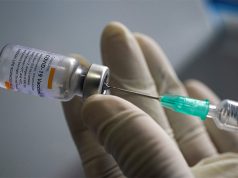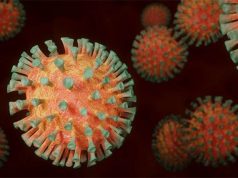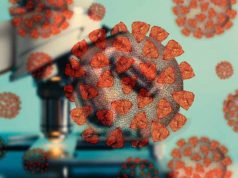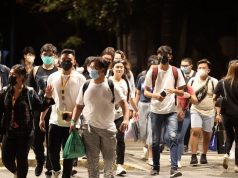
The following is a summary of some recent studies on COVID-19. They include research that warrants further study to corroborate the findings and that has yet to be certified by peer review.
High-pressure oxygen treatment may help long COVID
Patients with long COVID may see some improvement after breathing pure oxygen in a high-air-pressure environment, according to data from a small Israeli trial.
Researchers randomly assigned 73 patients with post-COVID symptoms lasting at least three months to receive hyperbaric oxygen therapy (HBOT) or a sham treatment.
Patients in the HBOT group spent 40 sessions breathing pure oxygen in a chamber in which the air pressure was two-to-three times higher than normal, allowing the lungs to receive more oxygen than they normally would.
Shortly after the last treatment, the HBOT group showed “significant improvement” compared to the sham group in thinking skills, energy, sleep, psychiatric symptoms, and pain, according to a report published on Tuesday in Scientific Reports.
Symptomatic improvement was associated with magnetic resonance imaging evidence of structural and functional brain healing and improved delivery of oxygen-carrying blood to the brain, the researchers said.
HBOT is often used to treat wounds that are not healing well and has recently been tested as a treatment for traumatic brain injury, but this is the first randomized trial to test it for long COVID. Larger studies are needed to confirm the findings and to identify patients who might benefit, the researchers said.
Earlier Omicron infection may protect against BA.4/BA.5
Young and middle-aged adults who were infected with earlier versions of the Omicron variant of the coronavirus are likely to have “strong” protection against reinfection with the currently dominant Omicron BA.4 and BA.5 subvariants, researchers say.
That will not be the case if they were infected with a variant that circulated before Omicron, however, according to a study from Qatar. Researchers there found that after taking vaccination status into account, infection with a pre-Omicron version of SARS-CoV-2 appeared to be only 15.1% effective at preventing a symptomatic BA.4/BA.5 reinfection and 28.3% effective at preventing any BA.4/BA.5 reinfection.
A previous Omicron infection, however, was 76.1% effective against symptomatic BA.4/BA.5 reinfection and 79.7% effective against any BA.4/BA.5 reinfection.
The study did not assess the severity of reinfection. In a report posted on medRxiv on Tuesday ahead of peer review, the researchers point out that the findings may not be applicable in older people, given that in Qatar only 9% of the residents are older than 50.
The study also showed that protection from infections with earlier pre-Omicron variants was weaker against BA.4/BA.5 than it was against BA.1/BA.2, “indicating that these two new variants have greater capacity to escape the immune-system response,” said study leader Laith Jamal Abu Raddad of Weill Cornell Medicine-Qatar.
COVID-19 vaccines linked with longer periods for some women
COVID-19 vaccination may be associated with short-term lengthening of the menstrual cycle for some women, according to a new study.
The findings are drawn from 3,858 female nurses in the United States and Canada who have been filling out questionnaires about their periods twice a year since 2011. As of December 2021, 91% of them had been vaccinated against the coronavirus. Before the pandemic, 15% reported irregular cycles; that rose to 22.7% in 2021, the researchers reported on Wednesday in the American Journal of Obstetrics & Gynecology. Vaccinated women had a 54% higher risk of increased cycle length compared to unvaccinated women, regardless of vaccine type and even after taking pandemic stress and health-related factors into account, the report said. On closer analysis, vaccination was only associated with change to longer cycles in the first six months after vaccination and among women whose cycles were short, long or irregular before vaccination, not among women with normal length, regular cycles.
“A normal menstrual cycle is characterized by tightly regulated inflammatory and immune mediators” that may be temporarily affected by the body’s immune response to the vaccines, the researchers said. They call for monitoring of “menstrual cycle health in vaccine clinical trials and increased attention to sex-based differences in vaccine response.”
—Reporting by Nancy Lapid; Editing by Bill Berkrot









